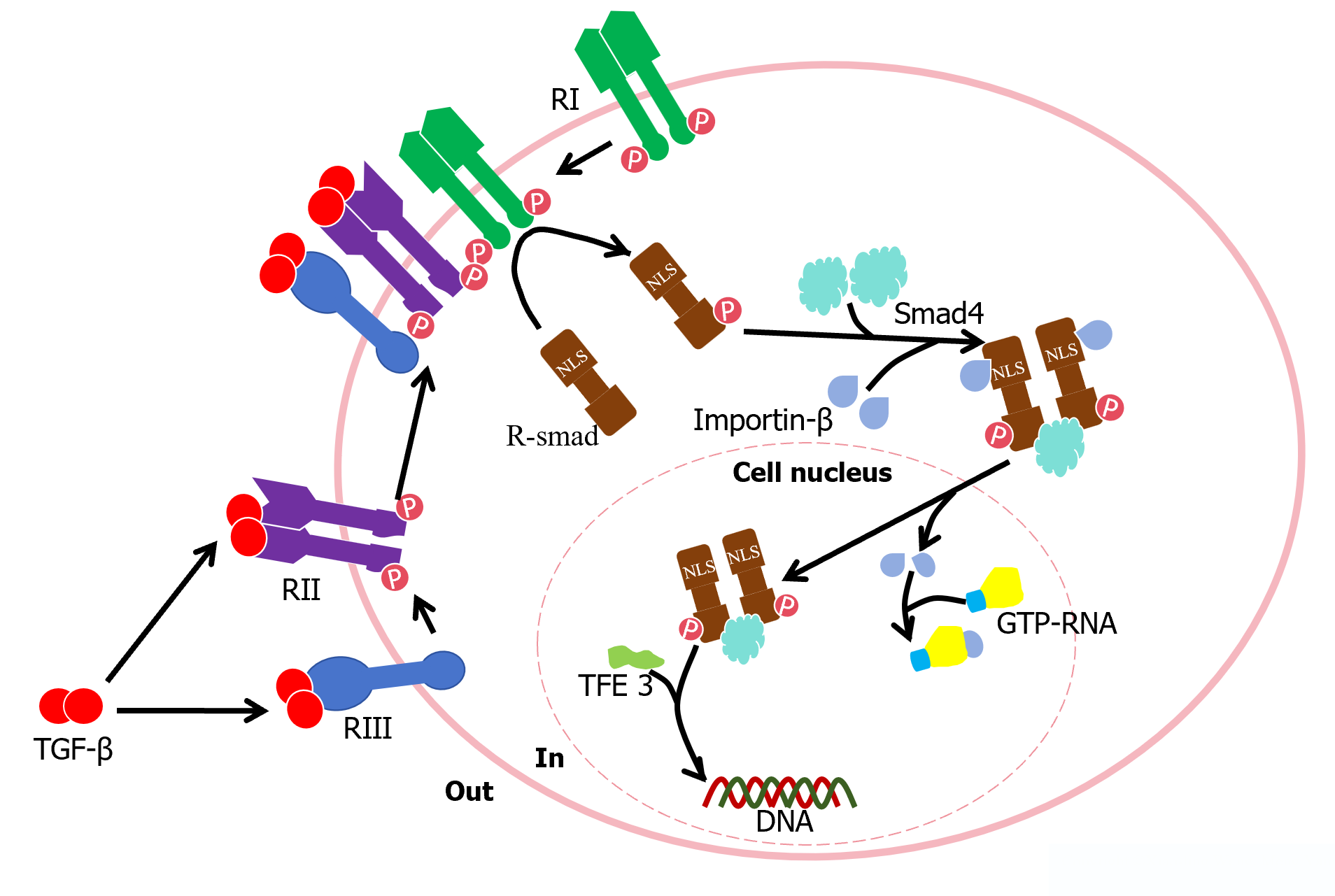Copyright
©The Author(s) 2024.
World J Hepatol. Jul 27, 2024; 16(7): 973-979
Published online Jul 27, 2024. doi: 10.4254/wjh.v16.i7.973
Published online Jul 27, 2024. doi: 10.4254/wjh.v16.i7.973
Figure 1 Transforming growth factor-β signaling pathway on hepatocytes.
During transforming growth factor-β (TGF-β) signaling, TGF-β ligands first bind to the RIII receptor. RIII receptors recruit ligands near the plasma membrane, increase the local concentration of TGF-β ligands on the cell surface, and then transmit TGF-β to RII, activating the RII kinase domain. After RII kinase activation, the intracellular kinase domain is also phosphorylated, leading to RI kinase activation and signal transduction to the cytoplasm. Phosphorylated Smads proteins change their structure, exposing nuclear localization signals to be sent to the nucleus and activate DNA transcription. TF: Transcription factor; P: Phosphorylation; NLS: Nuclear localization signals; TGF-β: Transforming growth factor-β.
- Citation: Wang XL, Yang M, Wang Y. Roles of transforming growth factor-β signaling in liver disease. World J Hepatol 2024; 16(7): 973-979
- URL: https://www.wjgnet.com/1948-5182/full/v16/i7/973.htm
- DOI: https://dx.doi.org/10.4254/wjh.v16.i7.973









